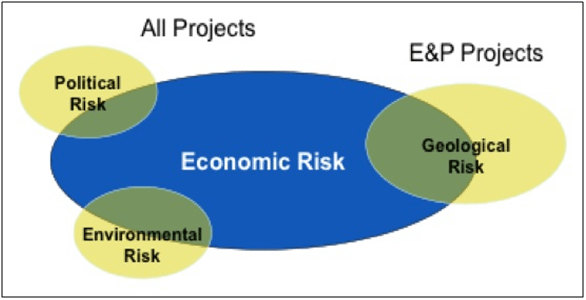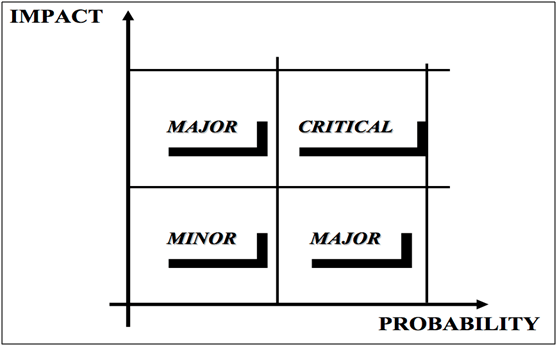An effective procurement strategy is not only a financial plan to manage the budget but also the workflow, and production timelines while keeping everything aligned with the company objectives. With the volatile market of the oil and gas industry, procurement plays an important role in ensuring supply of items and services are within budget allocation, ensuring on-time delivery on site and cost savings without jeopardizing quality and safety. As many professionals in the Oil & Gas industry are already aware, there are various high complexity of items and services which needs to be purchased. Hence, an effective procurement strategy plays a pivotal role in achieving this goal.
Table of Contents
Risk Management
Every business faces risks that could hinder its success. This is especially so for the Oil and Gas industry where the risk is more complex. With proper risk management plan, it would be able to overcome the risks and if possible turn it into opportunities. Risk Management is the process of identifying, analyzing, monitoring, communicating and treating risks that may occur and impact on the project schedule and cost in a way that it will be able to minimize any losses and maximize opportunities.
Risk Identification and Assessment
Volatile oil prices are due to change in four fundamental ways: U.S. oil production, uncertainty over OPEC’s clout, the fluctuating value of the dollar, and shifts in oil demand. Understanding the key risks in Oil and Gas Industry such as laws and regulations, missing the mark on the enforced regulations could have huge impact and consequences. The geological risk is finding out after exploration that there is no oil available at the location. Cost is another factor of risk that needs to be considered in deciding whether the drilling project will be worth the operation costs and spending allocated for the project and lastly the supply and demand whichever if do not meet could result in wasted resources.

Risk Identification and Assessment is where procurement recognizes the risks and seeks to minimize. With the risk management strategy, it would be able to establish the probability of occurrence, make an assessment and evaluate the impact of occurrence. Investigating risk reduction option or even terminating if found too risky to continue. However, if the risk has been reduced or the occurrence is low, the risk is tolerated.
The most effective way to manage risk is to part transfer risk to the third party. Treating a risk will not eliminate it, rather reduces it to an acceptable level which can be tolerated. Having a dated risk register is important as it compiled all risks, occurrence and impact, proposed plan action, and date when the risks will next be reviewed.
Having the right risk management tool is equally important as it could make a difference between unaware of the situation and having the visibility needed in making the right decisions.

Strategic Sourcing
Strategic sourcing involves developing a proactive, all-inclusive, and continuous evaluation and re-evaluation of the sourcing activities in an organization. Strategic sourcing aims to achieve the lowest Total Cost of Ownership (TCO) along with minimal supply chain risk. It involves internal collaboration with stakeholders and suppliers, as well as critical analysis spend and supplier risk management.
To implement effective strategic sourcing, there’s a need to categorize of spend area by identifying the requirements of business units. Executing an in-depth analysis of the current suppliers and future suppliers to understand and evaluate the suppliers market standing and industrial performance along with the risk and opportunities surrounding the suppliers’ market. By reinforcing the focus on the core capabilities of the suppliers and assuring the right suppliers for the right sourcing objective, strategic sourcing helps create cooperation between organizations and its suppliers.
Sustained relationship with suppliers also implies that when the suppliers are valued and considered in various sourcing decisions; they feel motivated to optimize their performance to meet the organization’s objectives. Strategic sourcing helps the organization mitigate risks, reduce costs and improve performance. Strategic sourcing leverages spend analysis, supplier evaluation and detailed research.
Early Involvement of Procurement and Engineering
Engaging early with suppliers and collaborating with the engineering team during the early stage of a project will help reduce project cost and achieve alignment between strategic targets and project execution plans. Addressing issues early helps in avoiding costly redesigning thus minimizing project risk.
Early engagement between procurement, engineering, and suppliers would enable a better understanding of project needs, ample time for efficient designing and planning for timely on-site delivery; this is especially so for high-value items with long lead times.
The full content is only visible to SIPMM members
Already a member? Please Login to continue reading.
References
Chris Fidd (2017). “Why the Oil & Gas Industry needs Procurement more than ever”. Retrieved from https://www.4cassociates.com/oil-and-gas-industry-procurement/, accessed 15/06/2019.
Jasline Kong Hui Ling, DPSM (2018). “Effective Procurement and Key Performance Indicators”. Retrieved from SIPMM: https://publication.sipmm.edu.sg/effective-procurement-key-performance-indicators/, accessed 16/06/2019.
Jason Goh Yeow Loong, PDPM. (2018). “Five Effective Methods for Selecting Suppliers in the Oil and Gas Industry”. Retrieved from SIPMM: https://publication.sipmm.edu.sg/five-effective-methods-selecting-suppliers-oil-gas-industry/, accessed 16/06/2019.
Kimberly Amedeo (2019). “What Makes Oil Prices So High, The Four Factors That Drive Up Oil Prices”. Retrieved from https://www.thebalance.com/what-makes-oil-prices-so-high-3305654, accessed 18/06/2019.
Mork Choo, DPMM. (2017). “Effective Procurement Practices in the Marine Offshore & Shipbuilding Industry”. Retrieved from SIPMM: https://publication.sipmm.edu.sg/effective-procurement-practices-in-the-marine-offshore-shipbuilding-industry/, accessed 16/06/2019.
Richard Hardstaff (2018). “What is the Real Value of Digital Procurement”. Retrieved from https://www.sftaylor.com/blog/what-is-the-real-value-of-digital-procurement, accessed 19/06/2019.
Rob Biedron (2018). “How to Build An Effective Procurement Strategy”. Retrieved from https://www.purchasecontrol.com/blog/effective-procurement-strategy/, accessed 15/06/2019.
Valerie Jones (2019). “Oil and Gas Looks to Create Value in Digital Transformation”. Retrieved from https://www.rigzone.com/news/oil_gas_looks_to_create_value_in_digital_transformation-15-mar-2019-158387-article/, accessed 19/06/2019.

